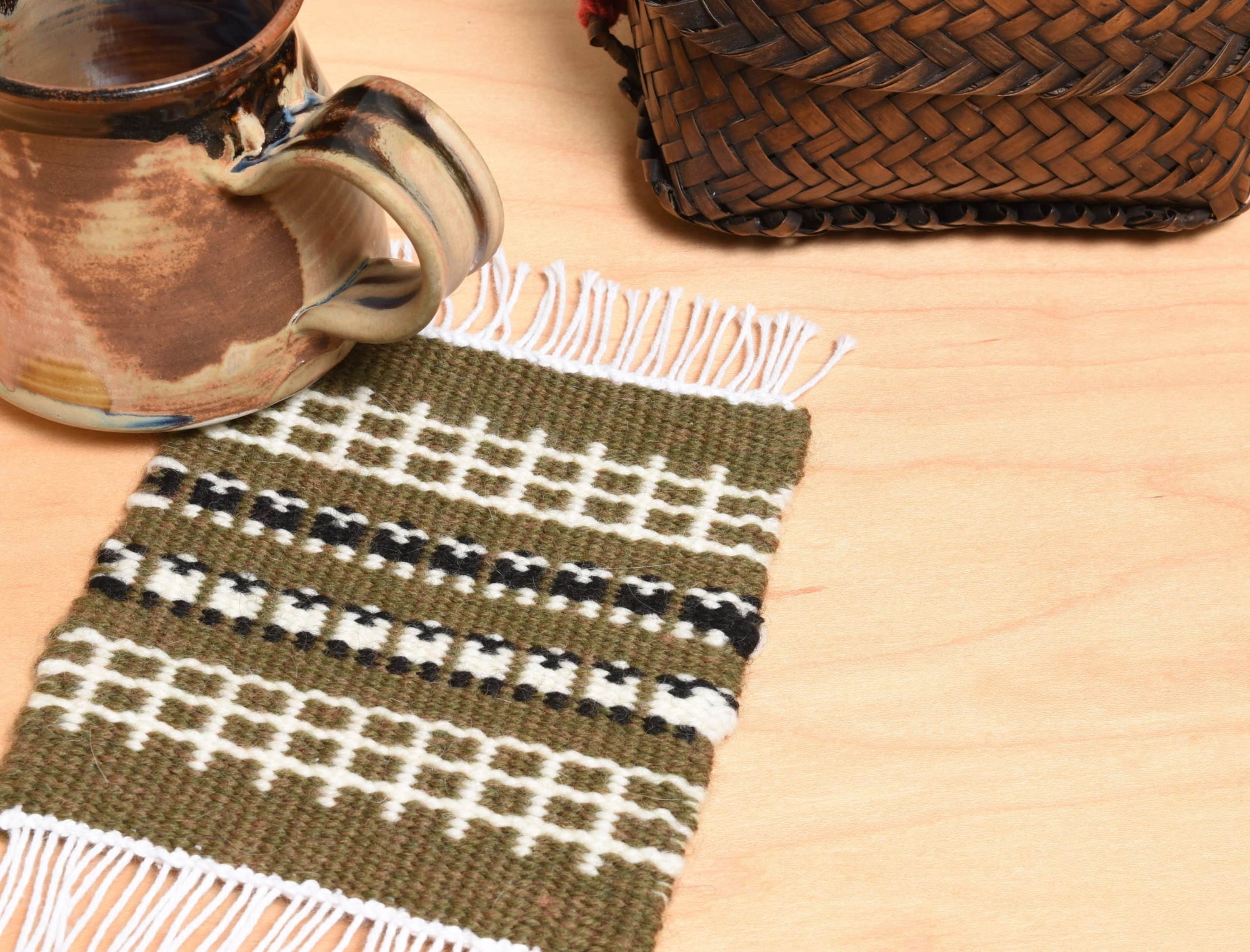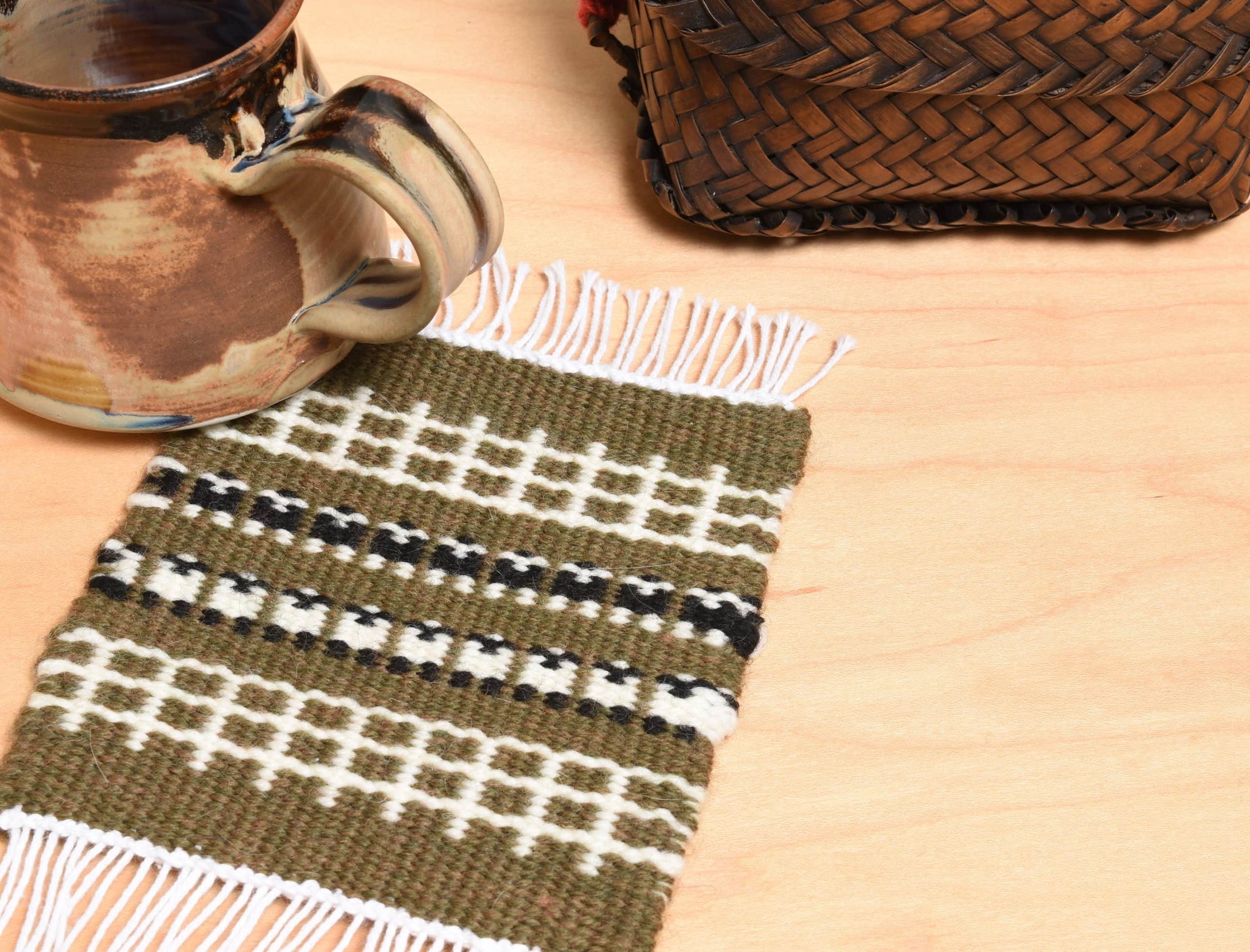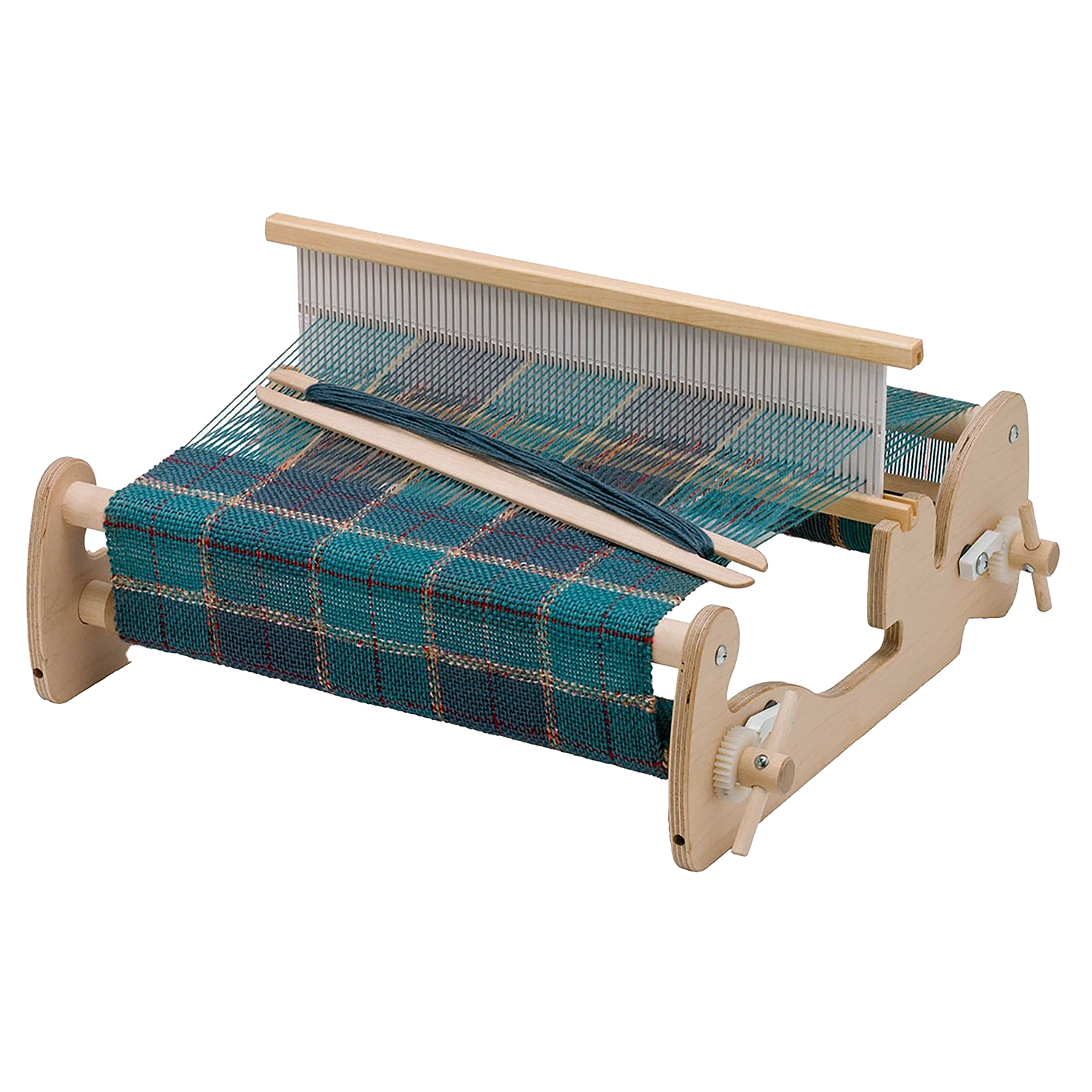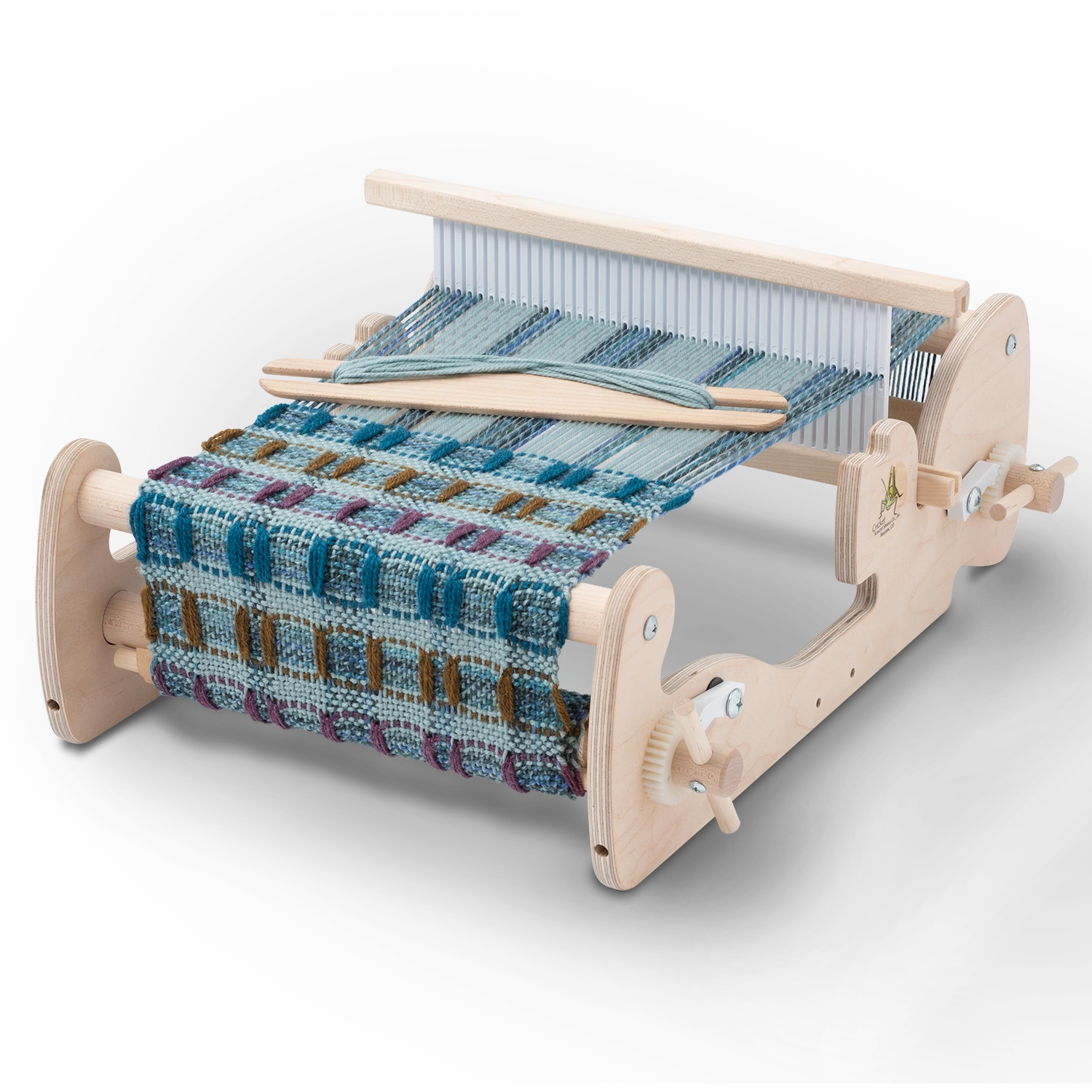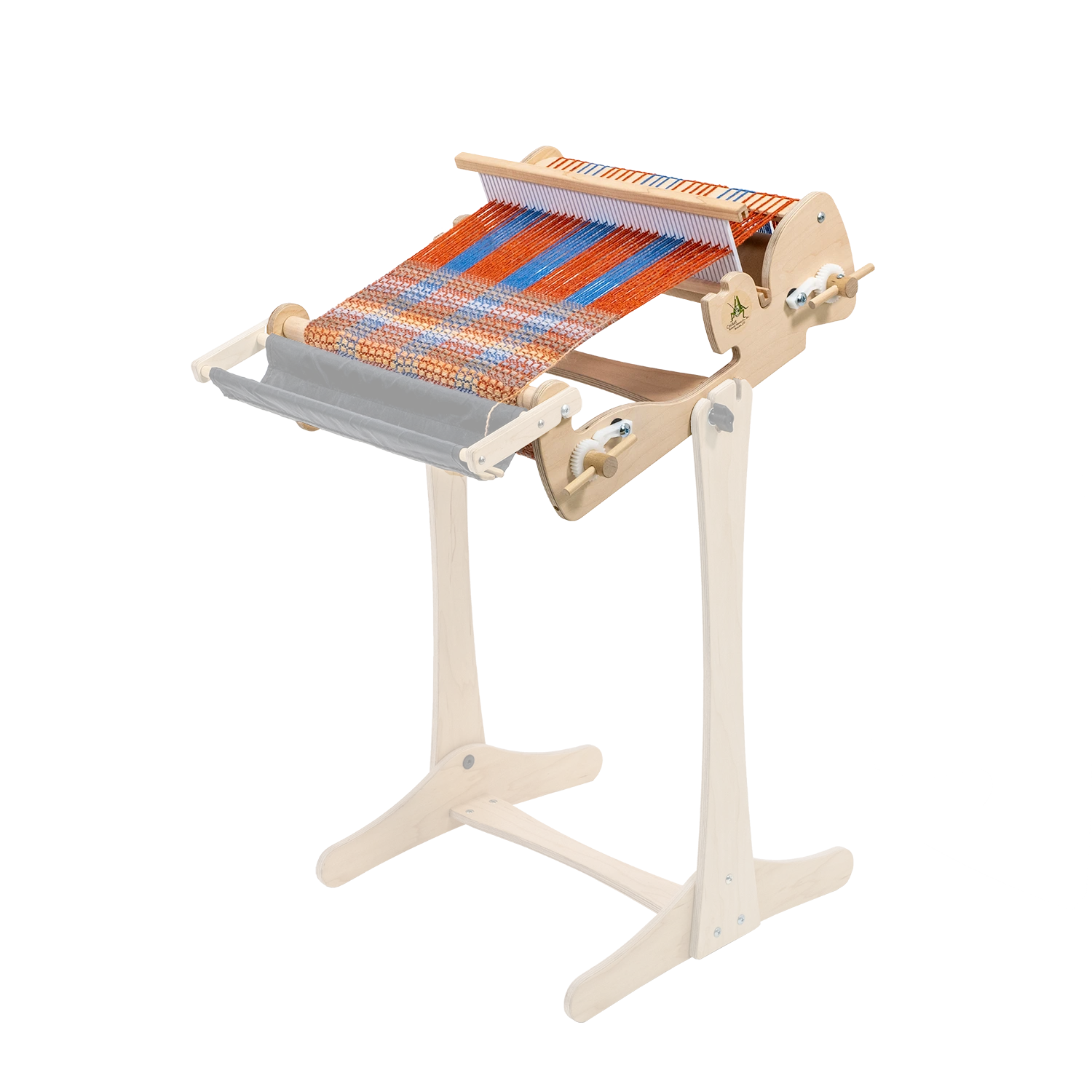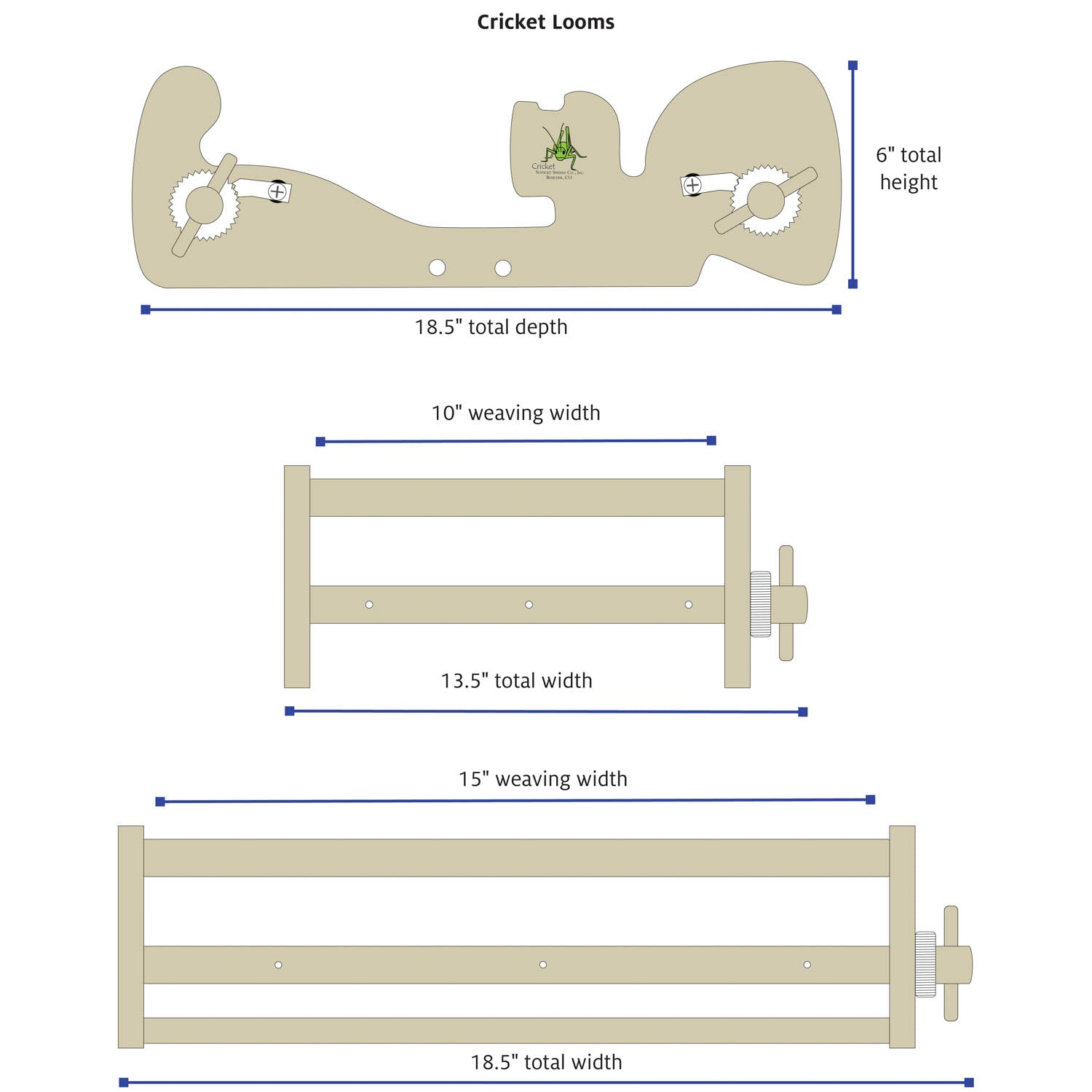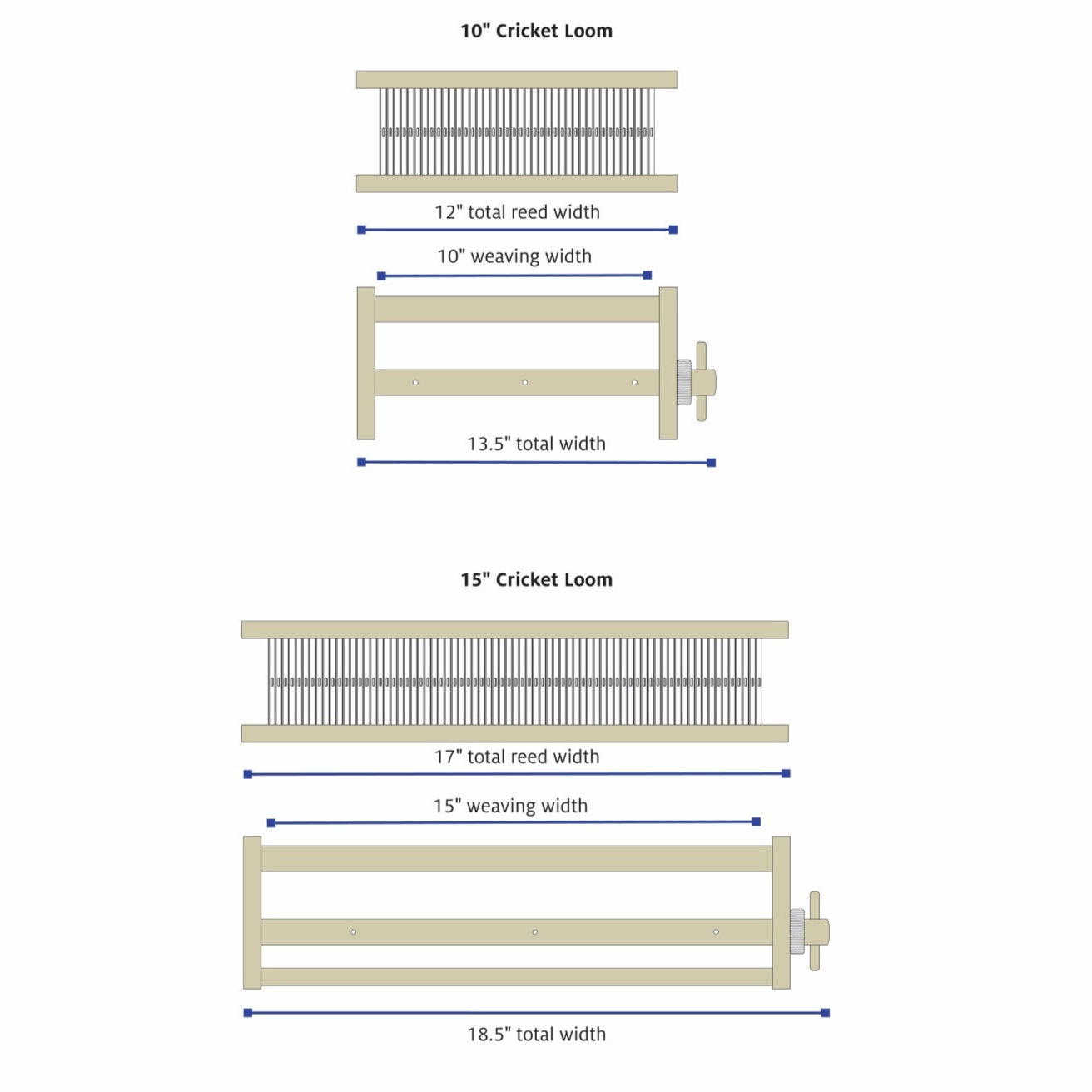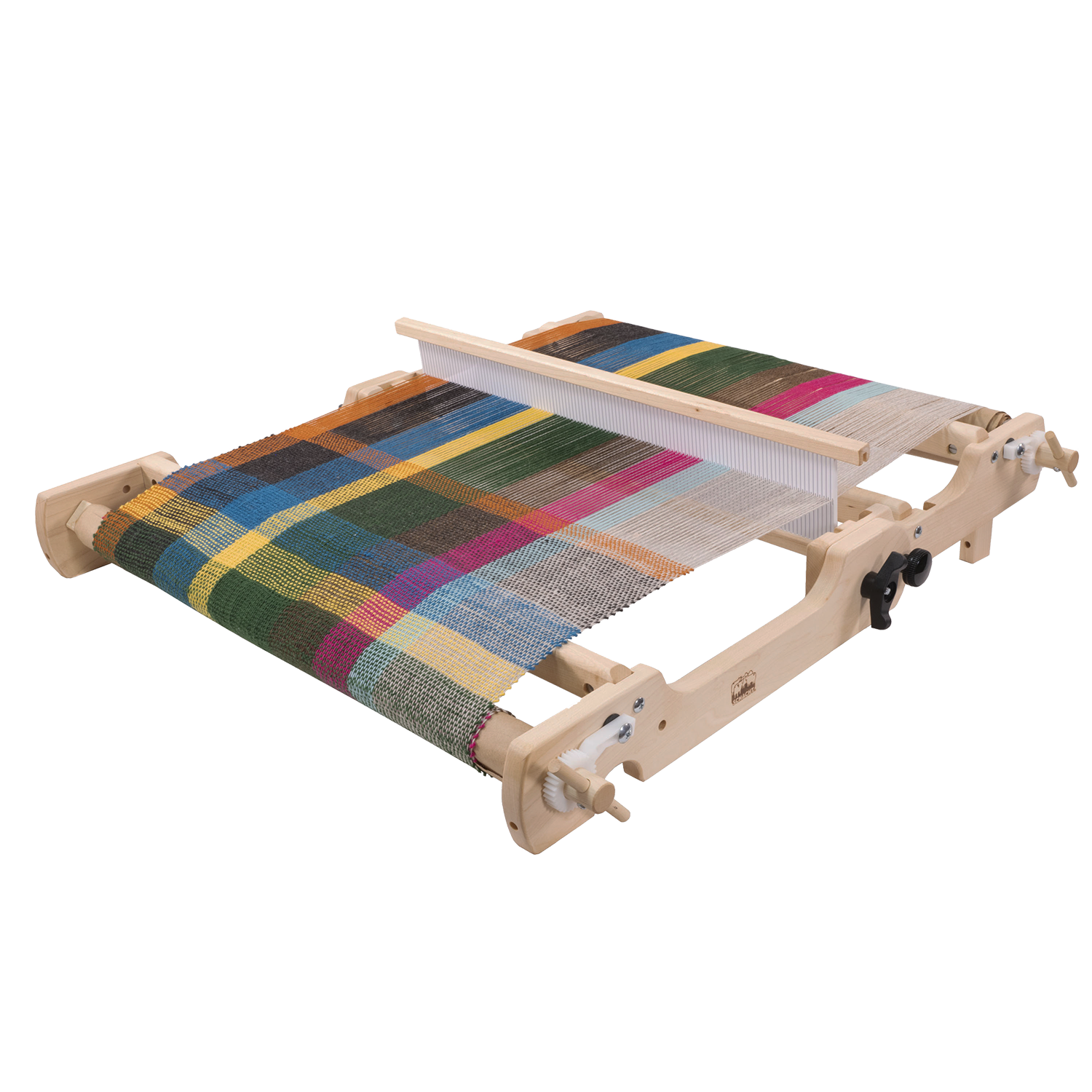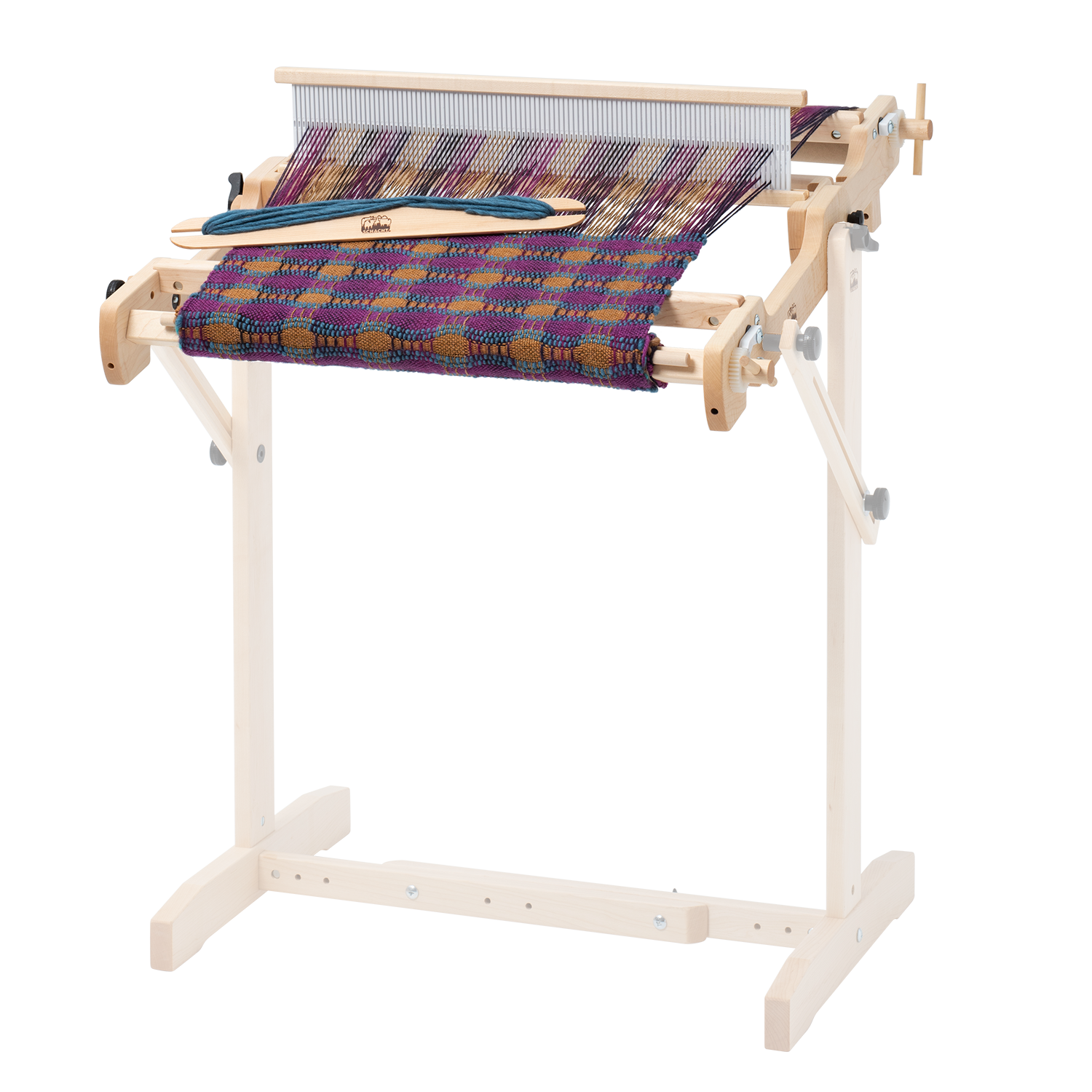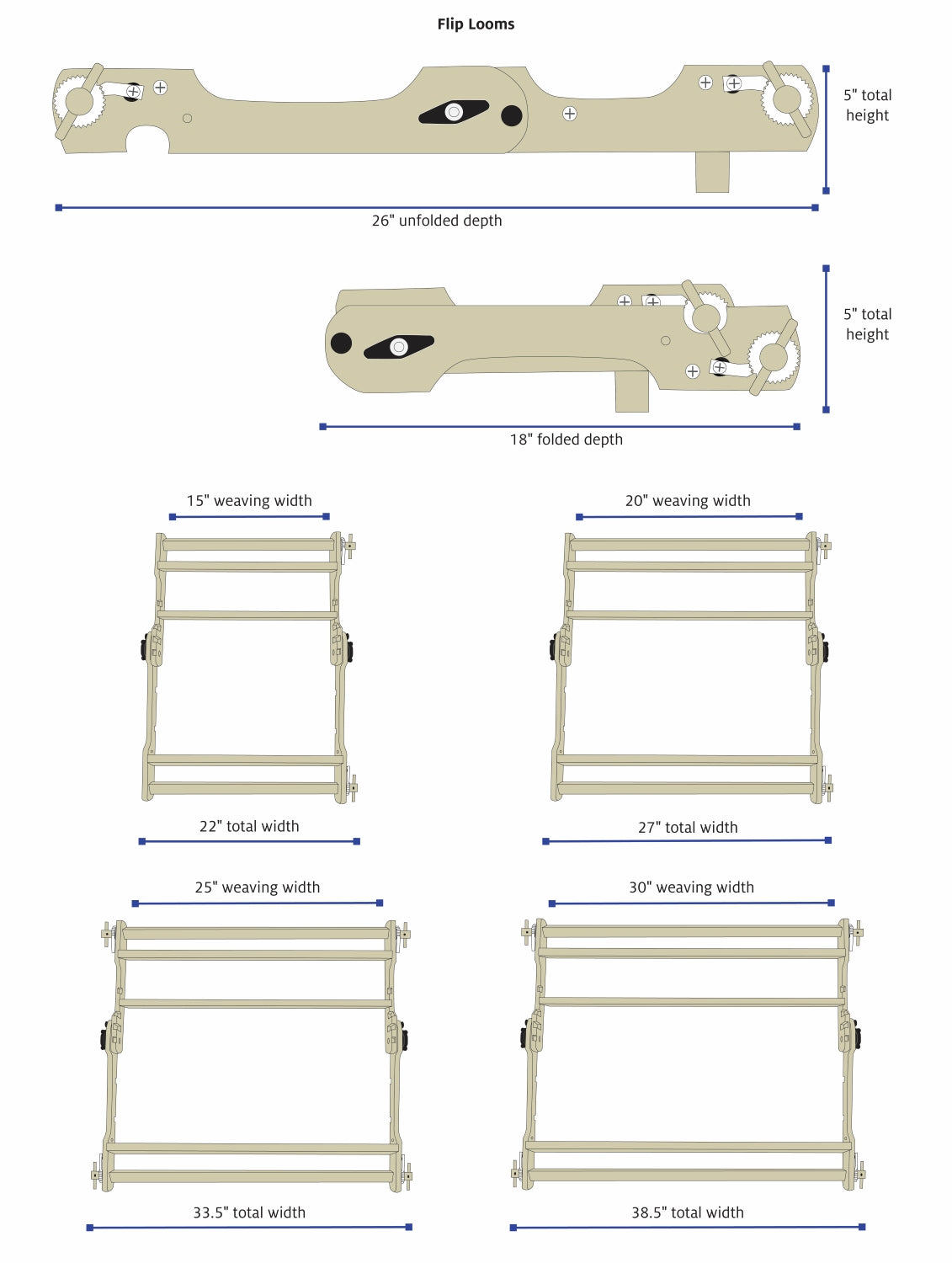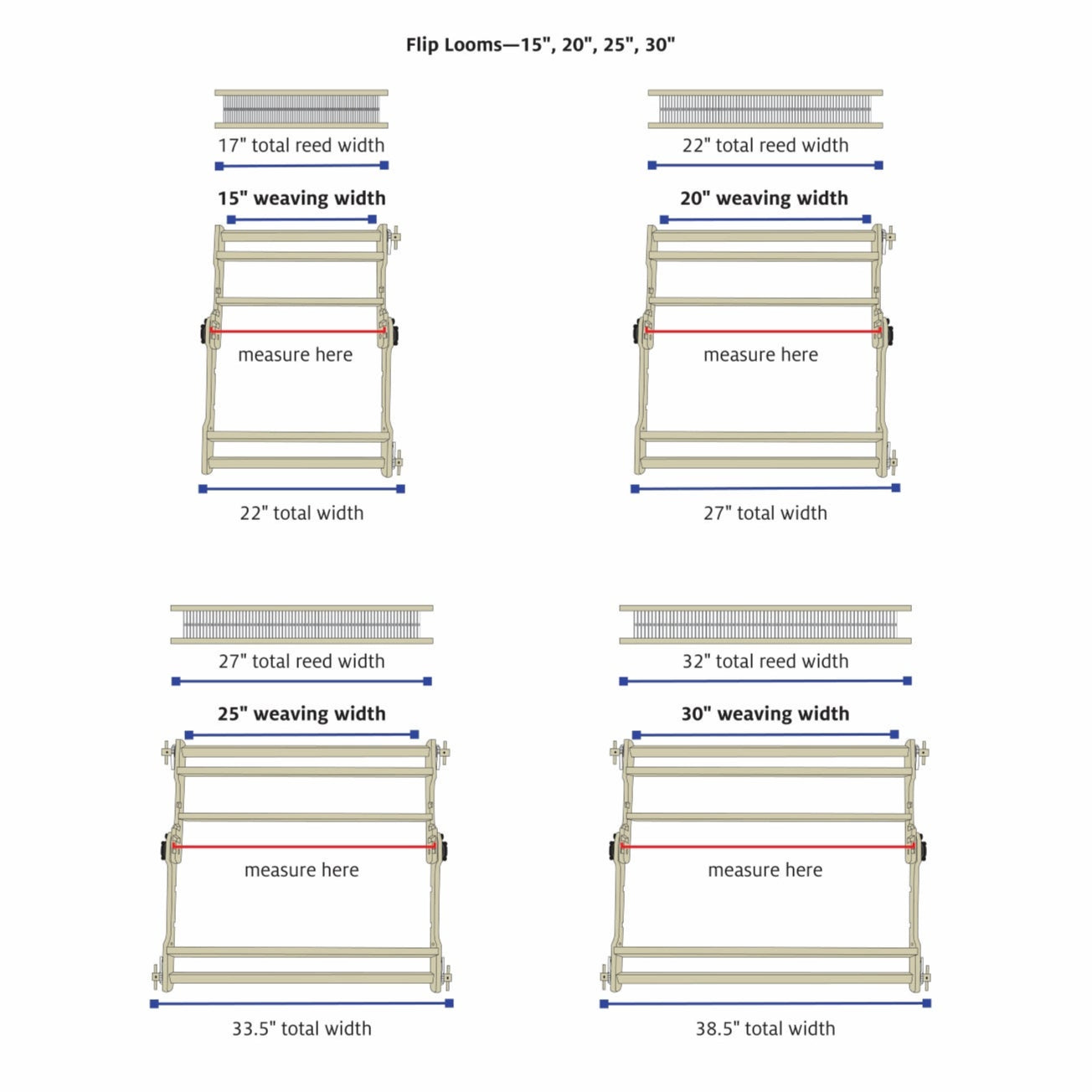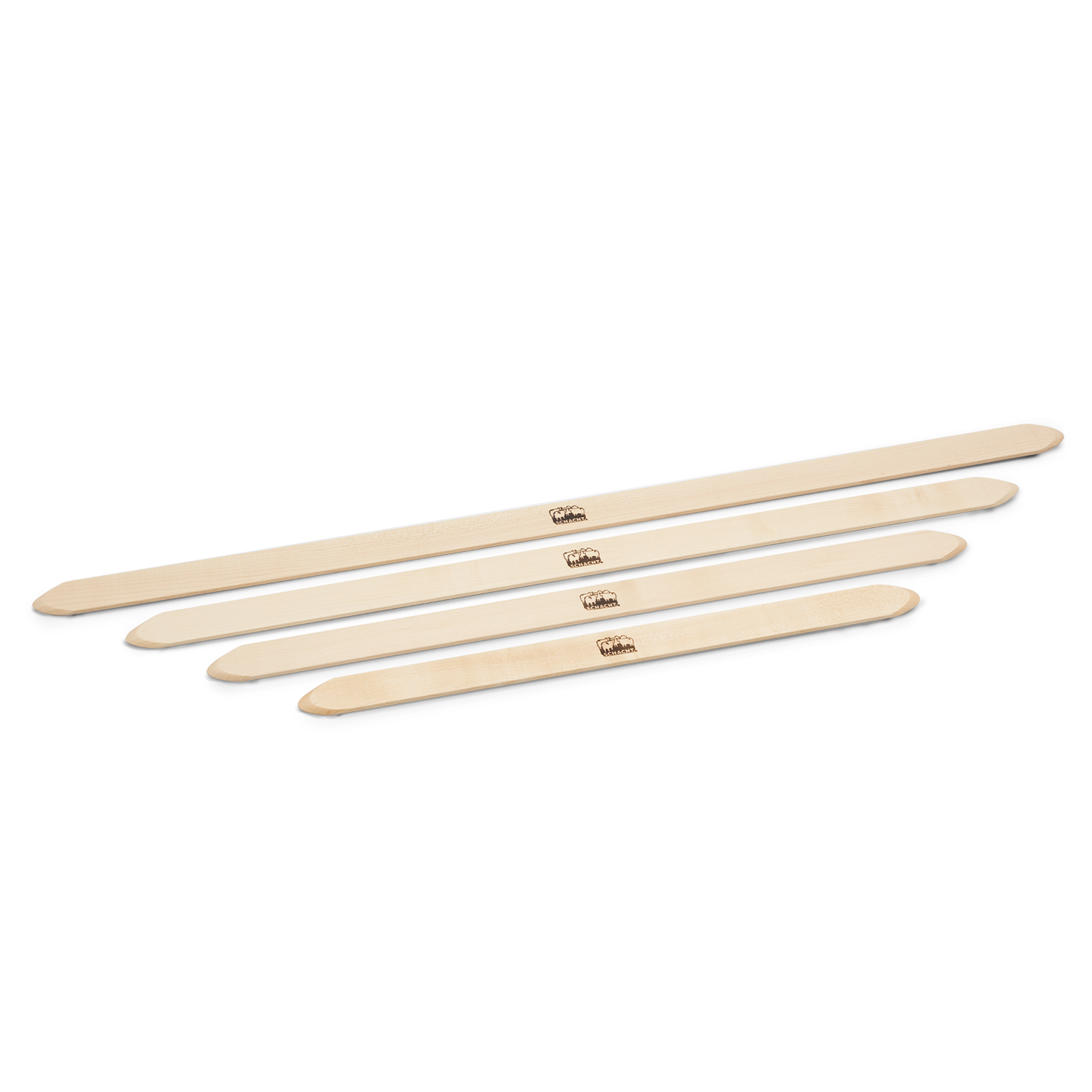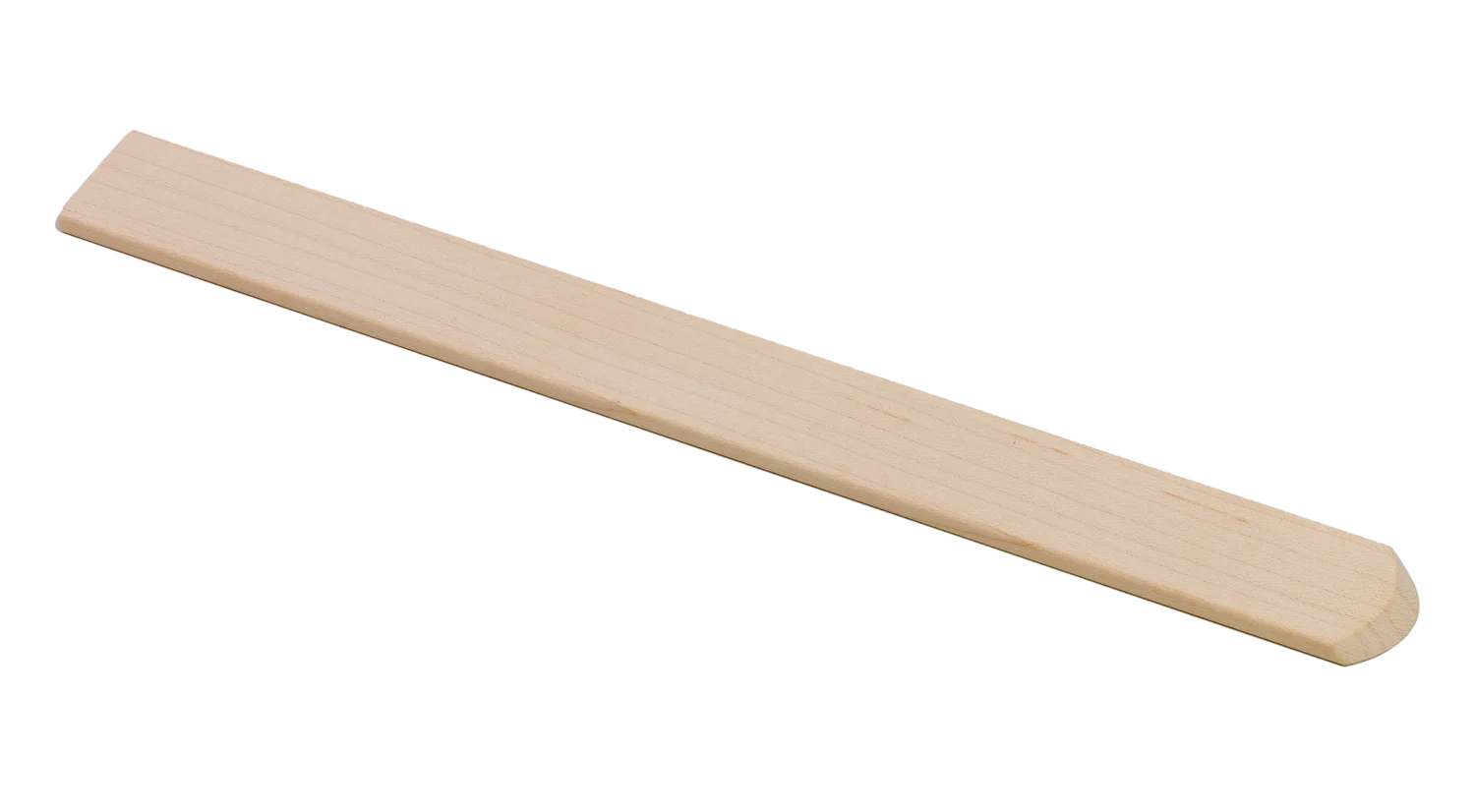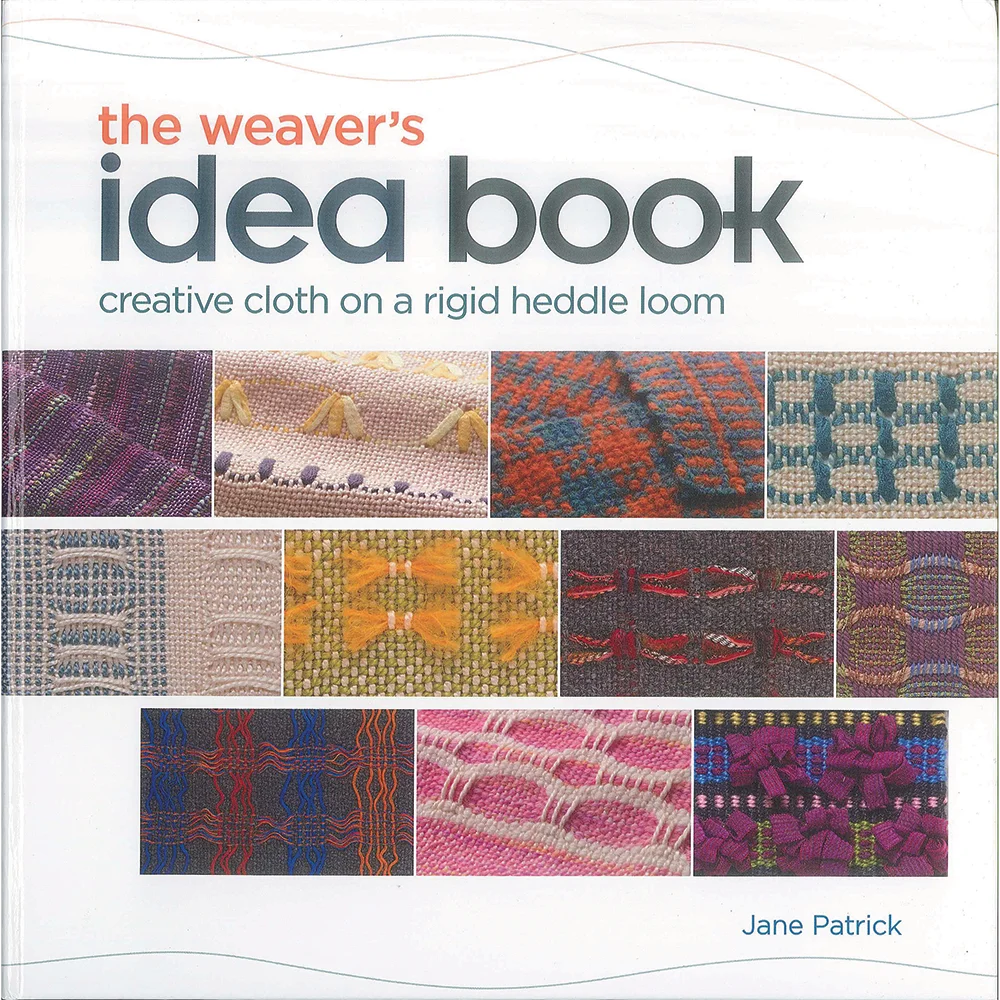By Constance Hall
Krokbragd, meaning “crooked path”, is a Norwegian word for a particular weft-faced weaving technique. This technique is perfect for making a thick and warm woven fabric that would keep out drafts when used as a wall or window hanging and be very warm as a bed covering or lap blanket in cold Scandinavian climates. The colorful yarns traditionally used would brighten up a long dark winter day both while weaving and when using the finished item.
Krokbragd is a weft-faced weave, which means you only see the weft yarn in the woven fabric. No warp yarns show.
Traditionally, krokbragd is woven on a floor loom using three shafts, but we rigid heddle weavers can also weave it, with just a bit of pick-up magic. Try krokbragd for rugs, tote bags, upholstery, mats or wall hangings. The color combinations and design possibilities are amazing and endless—and the back of the weaving looks as interesting as the front. The ten tips below will start you on your own crooked path. The journey can be endless.
Download the PDF for the sheep coaster shown here.
In krokbragd, one row of pattern is actually 3 weft rows:
- Pick-up row A
- Pick-up row B
- Down shed plain weave row.
A good way to think about weaving krokbragd is to imagine the weft yarn traveling on the surface as a row of pixels. Each pixel is a dot of yarn. The first pick, pick-up stick A, lays down 25% of the pixels. The second pick, pick-up stick B (the string heddle row), lays down the next 25% of the pixels. The third and final pick, plain weave in the down shed, lays down the last 50% of the pixels.
These three picks equal one row of pattern. (Note: where a warp thread is down, the yarn pixel on top will show on the surface. Where the warp threads are up the yarn goes under the warp threads and will be hidden.)
Top Ten Krokbragd Tips
1. Choosing the correct yarn for warp and weft is critical for krokbragd success.
The warp yarn needs to be thinner than the weft yarn. An 8/4 cotton rug warp is a good combo with a worsted weight wool yarn.
2. Sett is important.
A wider sett allows the weft yarn to pack down to fill in the row. An 8-dent heddle works well with 8/4 cotton rug warp.
3. Using string heddles speeds weaving tremendously.
To save your pick-up pattern for the second pick-up stick, you can put these yarns on a dowel with string heddles. Use the same 8/4 cotton rug warp yarn to make the string heddles (or use 5 7/8” Texsolv-red tie-folded in half). Measure 6” of yarn and cut and tie into a loop with a square knot. To make all of the heddles the same size, tie them around a template the correct diameter for your loop.
4. Pick up for row A.
Put the heddle into the down position and use a pick-up stick to pick up every other slot thread, excluding the outside threads. Push the pick-up stick to the back of the loom. Pick up for row B. With the heddle still in down position, and using the string heddles, pick up the slot threads that aren’t on the first pick-up stick. Place a string heddle under each of these warp threads to be picked up. Bring the loops up and over the dowel rod. When all of the heddles are installed, secure them with masking tape.

5. Set up a table or surface on each side of the loom to help manage the shuttles.
You will be working with multiple shuttles, one for each color, so you’ll need a place to put them.
6. The sequence never changes.
The colors change, but never the weaving sequence. The first pick is heddle up with the pick-up stick slid forward. The second pick is heddle up and string heddle pulled up. The third pick is heddle down. ALWAYS the same sequence, three picks to make a row of pattern. To make the three picks look like one row, they need to be pressed down firmly.
7. Beat with the heddle every pick.
Every three picks, use the hand held tapestry beater to compress the three picks into one row.
8. The pattern chart reads from the top down.
Each three-block row is three picks. A row that reads G, G, G is three picks of green following the weaving sequence. A row that reads G, W, W is one pick of green with heddle up and pick-up stick forward. One pick of white with heddle up and string heddles up, and the last pick of the three is heddle down and white.
9. Three colors is the maximum that can be used in one row.
One color for all three picks in a row makes a straight line of color as all the pixels are the same. Two colors per row can make a dotted line or the beginning of stripes. If you stack the same colors on top of each other row after row, you have vertical stripes. To start a new color, use a new shuttle and leave a tail hanging off the side to be woven in with a needle
10. Making a nice edge is a challenge in krokbragd.
If the color will be needed again on the next row, run the color up the side, hidden under the yarn you are using. If it won’t be needed for a few rows, cut it, leaving a 6" tail that can be needle-woven in later. Make sure the yarn on the shuttle is catching the edge thread with each pick. If it’s not going to catch, put the shuttle under that thread and then into the shed. Krokbragd has a tendency to draw in. Make sure to leave a good angle with your weft yarn before beating with the heddle and advance the warp often. If you are weaving a wide piece of krokbragd, you might find it useful to bubble the weft.

